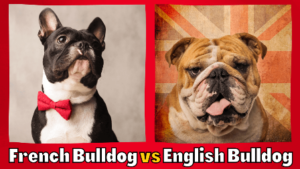Hyperkeratosis is a condition in which the normal cells in the nasal mucosa change and form into something abnormal, thick, sticky and oftentimes painful masses. It is caused by a viral or bacterial reaction that attacks the cells found in the nasal mucosa and causes them to alter their structure.
The result of all this is that the cells can no longer protect the airways from the irritants and pollutants that cause bad breath, thus creating an environment where bacteria can thrive and infect the tissues. The result is that your dog will start to breathe through his mouth instead of his nose, and his nasal passages will become swollen and irritated.

Symptoms
The symptoms are very similar to humans – a pain in the head and neck, a discharge, itching, redness, inflammation, swelling and sometimes a severe loss of smell. Treatment will usually involve a course of antibiotics which should clear up the overall problem. If the discharge seems to come in when the dog tries to inhale, then you may need to drain some of the nasal mucosa back into the throat so that it can be flushed away.
Hyperkeratosis in dogs, while very annoying, is a very rare condition that only affects one percent of dogs. This means that if you own a dog and it is showing any of these symptoms, you should take it to the vet as soon as possible. Your vet may be able to identify the cause, or he may be able to recommend a course of treatment which will cure your dog outright.
How do you treat hyperkeratosis in a dogs nose
Hyperkeratosis is caused by a lack of vitamin D production by the dog’s pituitary gland. Since the glands produce vitamin D through the skin, balm or all-natural dog nose balm that is specifically formulated to correct the deficiency can effectively reverse the effects of the disease.
The all-natural formulation of these products works by increasing the production of collagen and thus strengthening the dog’s skin. Additional vitamins can be provided by using supplements of fish oil and extra beta carotene. Although balm itself is not a prescription, it is strongly recommended that your pet be given a treatment yearly.
Although hyperkeratosis is a potentially serious condition, it is easily treated and is not life threatening.
Hyperkeratosis is also caused by bacteria buildup in the nasal passage. Treating the bacteria present in the dog’s nasal passages will alleviate the symptoms of this condition, making it more bearable to live in your home. There are several ways to treat your dog’s excessive production of mucus.
The most common treatment is a course of antibiotics, which must be administered regularly over a period of several weeks. If your dog has recurring bouts of nasal congestion, or severe pain, steroids may be prescribed. The long-term treatment of a hyperactive nasal mucous is tricky and should only be done under the supervision of a veterinarian. Although you may not think your dogs have a problem, regular visits to the vet will go a long way towards preventing this condition.
Treatment may also include topical steroid injections, oral corticosteroids or a combination of both. You should never restrain your dog from moving, as this can aggravate hyperkeratosis in dogs and cause further inflammation. All-natural remedies can help your pet return to its normal, energetic self.
Is hyperkeratosis in dogs painful?
Hyperkeratosis can be painful or cause itching and inflammation. Usually, it appears on the back of the dog and can later spread to other parts of the body.
Regularly check your dog’s paws for extra hardened skin, swelling and redness. If these symptoms are present, speak with your vet.
Why is my dog’s nose dry and cracked?
Firstly, there are a number of different reasons why your dog’s nose is dry and cracked other than nasal hyperkeratosis . If your dog is having an issue with excessive dryness, then it is important that you not only take him outside on a regular basis, but also that you provide him with plenty of fresh air and plenty of encouragement. Your dog’s nose was made for smelling and should not be forced to function like a dirty filter in the back of a car! You can also purchase a water bowl that has a built-in air pump, so that if your dog does not drink much water, then you should be able to help him out with some water.
Another common reason why dogs tend to have nasal passages that are dry is because they have become accustomed to inhaling when they want to go potty. A good way to help prevent this is to allow your pet to go outside on short trips. This is especially true if your dog has not been trained to use the designated outside area.
If you notice that your dog seems to have trouble going outside on his own, then you may want to start training him to use the designated spot for potty breaks instead. When your pet finally understands that he only gets to use the designated area, then you can start letting him outside more often and perhaps even provide him with his own little bathroom inside the house where he can wash his paws and clean himself up before going outside.




